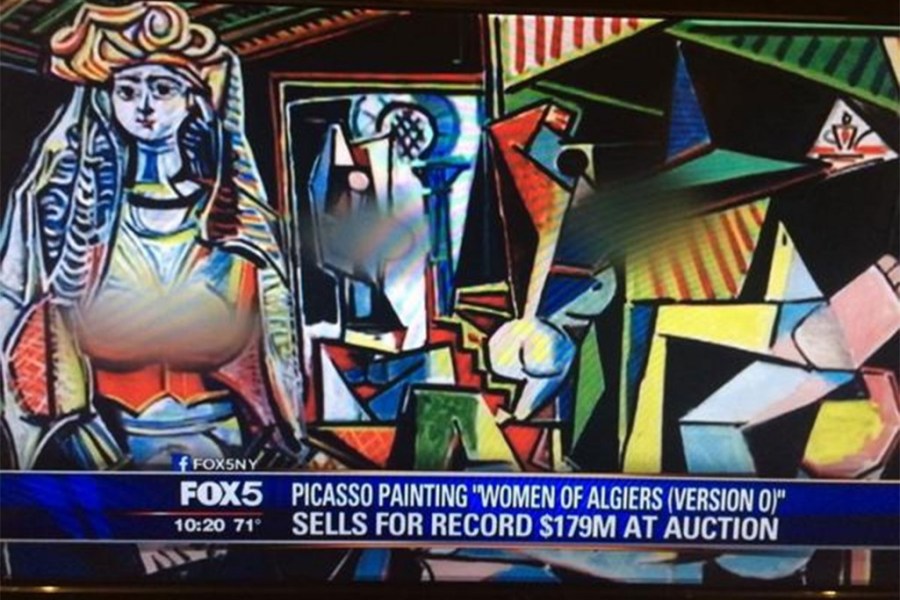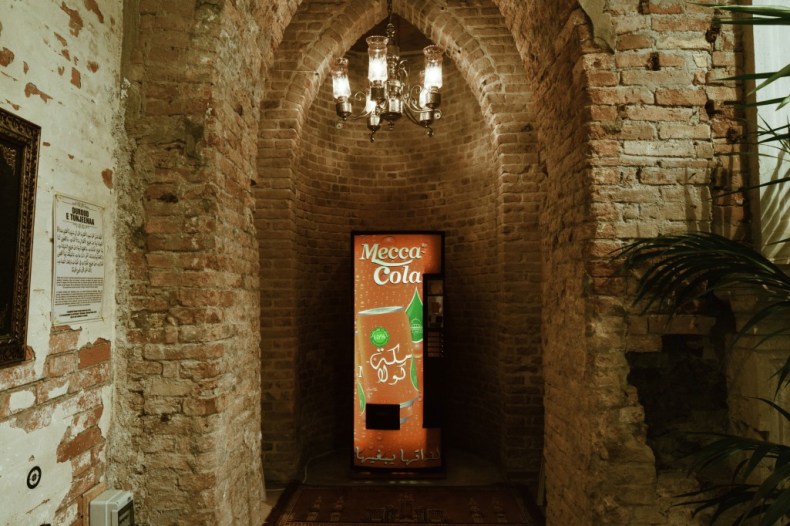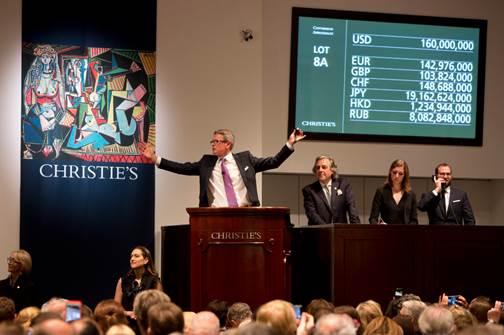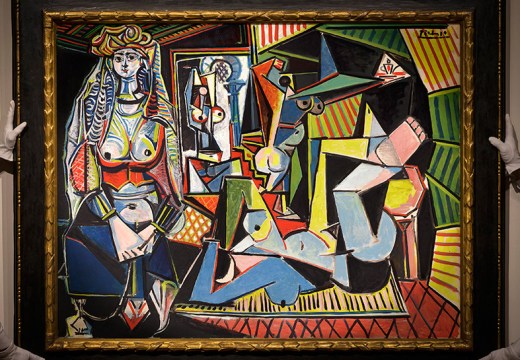From the October issue of Apollo: preview and subscribe here
The artist Christoph Büchel was commissioned by the Icelandic Art Center (IAC) in Reykjavik to create a work for Iceland’s official contribution to the 56th Venice Biennale 2015. Büchel decided that his work was to be housed in a deconsecrated church in the Cannaregio area of the city. Nothing obviously controversial about that. The project, however, involved reopening the church as a mosque. Venetian authorities shut the installation down less than two weeks after it opened in May, claiming that Büchel had only been given permission to use the space as an art exhibition, not as a religious building, and that the large number of visitors posed health and safety risks. On 31 July, the IAC’s appeal to reinstate the exhibition was rejected by a regional court, which also indicated that no further consideration of the matter would be made until after the close of the Biennale in late November. Regardless of whether you find the reasoning behind the city’s decision plausible, the situation provides a timely example of how issues of freedom of expression and art are currently playing out.
Under English law, the right to freedom of expression can be found in common law and, since the UK is a signatory to the European Convention of Human Rights (ECHR), it is incorporated in national law by way of the Human Rights Act 1998. Article 10 of the ECHR states that everyone has the right to freedom of expression. The right is not, however, absolute and may be qualified by restrictions and measures, including those ‘necessary in a democratic society, in the interests of national security, territorial integrity or public safety, for the prevention of disorder or crime, [or] for the protection of health or morals’. Signatories, therefore, have discretion when prescribing laws which may infringe upon freedom of expression, although the legal basis of such provisions can be challenged nationally or at the European Court of Human Rights in Strasbourg.
Should a dispute arise over the existence or scope of a restriction, a delicate balancing act must be performed as to whether the infringement can be justified by one of the above qualifications. The English and European courts are frequently invited to perform such a balancing act, for example in relation to media disputes concerning privacy and photographs, but rarely in those specifically concerning artworks or their display. This means that there is little case law to guide those dealing with potential infringements of artistic freedom of expression. There is no single piece of legislation or body of law that governs offences or actions in this area, and issues are often more effectively resolved case-by-case, on a policy rather than on a legal basis.
Commentators have noted that 2015 has so far provided a variety of instances, including Büchel’s project in Venice, in which censorship, or self-censorship by arts institutions has occurred. Today, censorship is a term that tends to carry negative connotations, and art that attracts censorship is frequently that which shocks. The artist Jake Chapman once observed that ‘certain techniques of shock are embedded in the way we determine right from wrong.’ As viewers we are invited to examine moral or ethical subject matter and we do so in relation to our position within a socio-historical context. Historically, material subject to censorship includes sex (pornography, underage, homosexuality), violence, or religion. Legal terms used to police these areas include obscenity, indecency, and blasphemy. In recent times offences can also fall under anti-terrorism laws. Public opinion on the acceptable boundaries within these subjects shifts over time and even where the law requires an objective standard or test to be met to convict or justify an infringement, assessment is still difficult and cannot be readily extricated from contemporary moral standards.
The controversy provoked by the retrospective, ‘Robert Mapplethorpe: The Perfect Moment’, when it travelled to the Contemporary Arts Center (CAC) in Cincinnati in 1990, is reported as the first obscenity prosecution against a museum or gallery and against its director in the US. For a conviction, the jury were asked to find that ‘the average person, applying contemporary community standards, would find the work, taken as a whole, appeals to the prurient interest.’ The work must depict or describe ‘in a patently offensive way, sexual conduct’ (defined in applicable state law). Unlike many offences linked to issues of freedom of expression, the US obscenity offence carries a specific defence that upholds the right of free speech enshrined at constitutional level under the First Amendment. If a jury finds that the work, taken as a whole, has serious artistic value, then they should not convict. The jury found in favour of the CAC, and the institution and its direction were acquitted. The reason? The photographs were found to have artistic value.
The elements of the legal test for obscenity in the US stated above originate in English case law, yet in US law, obscenity is expressly sexual in nature. In November 2014, The Museum of Contemporary Art (MOCA) in Jacksonville opened an exhibition entitled: ‘Project Atrium: Angela Strassheim’. A number of works were displayed in the museum’s entrance lobby, including the 2013 photograph work Untitled (Janine Eight Months Pregnant). The image depicted a heavily pregnant woman, reclining naked.
The City Council President of Jacksonville, Clay Yarborough, visited the exhibition, saw the image, and declared it pornographic. He demanded that the mayor withdraw the city’s funding ($230,000) of MOCA stating, ‘I am trying to promote a positive moral climate in our city and though some will defend the pornography by labeling it “art”, we need boundaries in order to be healthy, especially where it concerns our children.’ The museum faced potential indirect censorship via the withdrawal of funding (something fought by the Brooklyn Museum in 1999 when Mayor Giuliani was outraged by the ‘Sensation’ exhibition); it also faced a (legally inaccurate) condemnation by a public figure attempting to tap in to assumed popularist sentiment. Pornography is not necessarily obscene in law. Fortunately, Jacksonville’s mayor declined Yarborough’s call to withdraw funding.
Employing censorship to appease your audience can quickly descend into nonsense. In May 2015, Picasso’s Les Femmes d’Alger (Version ‘O’) was sold at auction, achieving yet another of those dizzyingly high art-market prices. Television broadcaster Fox5NY reported the story with an accompanying graphic of the painting. So as to not shock its viewers, the channel blurred out the nipples on the female forms. The move was mocked across social media; perhaps Fox5NY was out of touch with what really concerns society in 2015?
One artist whose name is often linked to issues of freedom of expression is Sally Mann, whose work often incorporates images of children in provocative poses with discrete sexual themes. Certain images are cited in discourse about the boundaries of freedom of expression, and occupy an uncomfortable plane when galleries or museums are considering whether, or how, to display such works. Unlike obscenity, works featuring photographs of children which are potentially indecent, can be charged in the UK under many pieces of legislation, including the Criminal Justice Act 1988.
In 2011, the English Court of Appeal considered whether to overturn a conviction concerning a defendant who had been charged with possession of an extreme pornographic image and indecent photographs of a child. The court observed that a striking feature of the counts relating to the indecent photographs was that the images were contained in books by ‘well-known photographers […] widely available from reputable outlets’. The books included monographs by David Hamilton and Mann. The court also noted that one of Mann’s photographs in evidence had appeared in an article in The Guardian and expressed surprise that the charges had been brought in relation to the images. The balancing act outlined above is not easy and one could still question the court’s reasoning: if a book is sold by a reputable outlet, does it automatically mean that the content is not illegal, and having passed that test, if a newspaper takes the risk of publishing it, does that also mean that there are no relevant issues? This highlights the importance of policy behind decisions taken by institutions where freedom of expression is concerned.
The examples cited above demonstrate limits on freedom of expression in what has been the traditional theatre of most objections: sex (indecency and obscenity). With the exception of the (entertaining) Fox5NY example above, 2015 has presented instances of arts censorship, or limitation on freedom of expression, few of which are connected to indecency or obscenity. Is a subtle shift occurring? Artworks which take race or religion as their subject now face increasingly difficult times, indicating a change in society’s concerns triggered by world events such as Charlie Hebdo, the shooting of Michael Brown in Ferguson, and the complexities of the fallout after the invasions of Afghanistan and Iraq.
The difficulties are heightened by fear of violent repercussions. In January 2015, the Victoria and Albert Museum in London removed an Iranian work depicting the prophet Mohammed from its online archive, due to security concerns. In June 2015, the New York Times came under fire for publishing Eggs Benedict by Niki Johnson, an artwork made of condoms depicting Pope Benedict XVI; it had earlier stated that it would not publish any of Charlie Hebdo’s cartoons depicting Mohammed. The piece was on display at the Milwaukee Art Museum, which, rather than removing the work has commendably used the controversy to hold discussion sessions on the theme of censorship in art. Did Venice and the Biennale miss an opportunity to do something similar in response to Büchel’s work cited above?
In reference to Andres Serrano’s Immersion (Piss Christ) (1987), which has been the subject of much debate and many lawsuits, the lawyer Anthony Julius commented that ‘The work itself is an assertion of artistic authority: this is how powerful an artist can be, he is able to mock the principal icon of the Catholic Church.’ Perhaps religious works have always had the potential to incite violent repercussions: Serrano’s work was smashed by protestors in Avignon in 2011, and the venue’s security guards threatened. But there does seem to be a change in how institutions approach the display and exhibition of works, especially those with controversial religious or racial subject matter. Are they more cautious? This could be attributable to the prominent role of fear and fear of violence in contemporary society, or to the increased pressure from lobbying by groups as exemplified by the Barbican closing ‘Exhibit B’ by Brett Bailey. Whether this is indicative of longer-term trends reflecting modern society’s concerns is, of course, yet to be seen.
Click here to buy the latest issue of Apollo
Unlimited access from just $16 every 3 months
Subscribe to get unlimited and exclusive access to the top art stories, interviews and exhibition reviews.















![Masterpiece [Re]discovery 2022. Photo: Ben Fisher Photography, courtesy of Masterpiece London](http://www.apollo-magazine.com/wp-content/uploads/2022/07/MPL2022_4263.jpg)
Why are fathers so absent from art history?